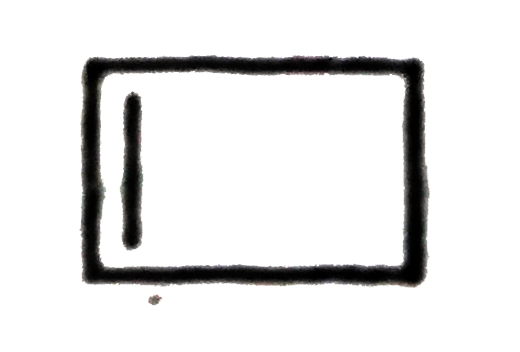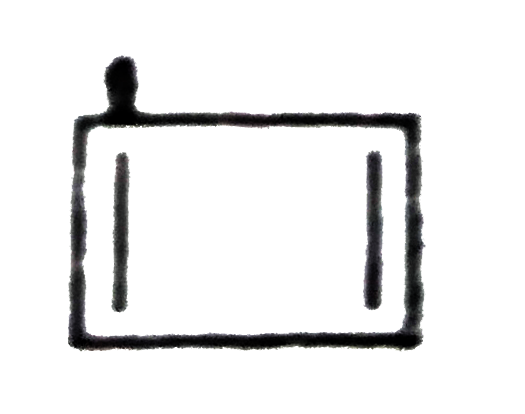CH2∣Br−CH=CH−CH2∣BrZnCH3OH−−−−−→ Product The predominating product is

CH2=C=C=CH2
CH2=CH−CH=CH2

The correct Answer is:C
To solve the problem, we need to analyze the given compound and the reagents involved in the reaction.
1. Identify the Structure of the Compound:
The compound provided is a 1,4-dibromobut-2-ene. Its structure can be represented as:
Br-CH2−CH=CH-CH2−Br
Here, two bromine atoms are attached to the terminal carbon atoms of the butene chain.
2. Understand the Reagents:
The reagents given are zinc (Zn) and methanol (CH₃OH). Zinc is known to facilitate dehalogenation reactions, which means it can remove halogen atoms from organic compounds.
3. Reaction Mechanism:
- When zinc reacts with the dibromide, it will remove the two bromine atoms. This process is called dehalogenation.
- The removal of the bromine atoms leads to the formation of a double bond between the adjacent carbon atoms, resulting in the formation of a radical intermediate.
4. Formation of the Product:
- The radical intermediate can undergo a rearrangement or recombination to form a cyclic structure due to the proximity of the carbon atoms.
- Specifically, the two carbon atoms that were initially bonded to the bromines can form a cyclobutene structure as they come together to stabilize the radical.
5. Final Product:
The predominant product of the reaction is cyclobutene, which can be represented as:
C4H6(cyclobutene)
Conclusion:
The major product formed from the reaction of 1,4-dibromobut-2-ene with zinc in methanol is cyclobutene.
---
The compound provided is a 1,4-dibromobut-2-ene. Its structure can be represented as:
Br-CH2−CH=CH-CH2−Br
Here, two bromine atoms are attached to the terminal carbon atoms of the butene chain.
The reagents given are zinc (Zn) and methanol (CH₃OH). Zinc is known to facilitate dehalogenation reactions, which means it can remove halogen atoms from organic compounds.
- When zinc reacts with the dibromide, it will remove the two bromine atoms. This process is called dehalogenation.
- The removal of the bromine atoms leads to the formation of a double bond between the adjacent carbon atoms, resulting in the formation of a radical intermediate.
- The radical intermediate can undergo a rearrangement or recombination to form a cyclic structure due to the proximity of the carbon atoms.
- Specifically, the two carbon atoms that were initially bonded to the bromines can form a cyclobutene structure as they come together to stabilize the radical.
The predominant product of the reaction is cyclobutene, which can be represented as:
C4H6(cyclobutene)
The major product formed from the reaction of 1,4-dibromobut-2-ene with zinc in methanol is cyclobutene.
Topper's Solved these Questions
- HYDROCARBONSBOOK - AAKASH INSTITUTE ENGLISHCHAPTER - HYDROCARBONSEXERCISE - SECTION-C OBJECTIVE TYPE QUESTIONS (MORE THAN ONE OPTIONS ARE CORRECT)
12 Videos
- HYDROCARBONSBOOK - AAKASH INSTITUTE ENGLISHCHAPTER - HYDROCARBONSEXERCISE - SECTION-D LINKED COMPREHENSION TYPE QUESTIONS
7 Videos
- HYDROCARBONSBOOK - AAKASH INSTITUTE ENGLISHCHAPTER - HYDROCARBONSEXERCISE - ASSIGNMENT SECTION-A COMPETITION LEVEL DIFFER BY
50 Videos
- HALOALKANES AND HALOARENES BOOK - AAKASH INSTITUTE ENGLISHCHAPTER - HALOALKANES AND HALOARENES EXERCISE - ASSIGNMENT SECTION -D
15 Videos
- HYDROGENBOOK - AAKASH INSTITUTE ENGLISHCHAPTER - HYDROGENEXERCISE - ASSIGNMENT (SECTION - D) (Assertion-Reason Type question)
15 Videos
Similar Questions
Knowledge Check
Ph−C∣BrH−CH2−C∣BrH2Zn−cu−−−→ΔProduct
Product of the above reaction is :APh−CH=CH−CH2−BrB CPH−CHBr−CH=CH2DPh−C=C−CH3
CPH−CHBr−CH=CH2DPh−C=C−CH3CH3−C∣EtH−OAc(d)OH−−−→ Product of the reaction is:
ACH3−Et∣CH−OHBCH3−C∣EtH−OHCCH3−C∣EtH−OH(d) & (I)DCH3−C∣CH3=CH2Ph−CH2−CH∣D−CH3Br2/hv−−−−→
Product of the above reaction will be :ADiastereomersBRacemic mixtureCMesoDConstitutional isomers
C∣OHH(2)−C∣∣O−C∣OHH−C∣OHH2HlO4−−→ products
Products are:
View SolutionCH2OH∣ C=O∣ (CHOH)3∣ CH2OHNaBH4−−−−→A+B
Fructose
The product A and B in the a above reaction are not
View SolutionChoose the correct reagents used in the conversion
CH2=CH2(p)−−→CH| Br2−CH| Br2(q)−−→CH2=CHBr(v)−−→CH≡Ch(s)−−→
View SolutionCH3−Br+NaO−CH3∣C∣CH3−CH3→ ?
The product is
View SolutionCH3−CH3∣C=CH−CH3∣C∣CH3−CH3NaIO4−−−−→KMnO4Products
The products are :
View Solution
